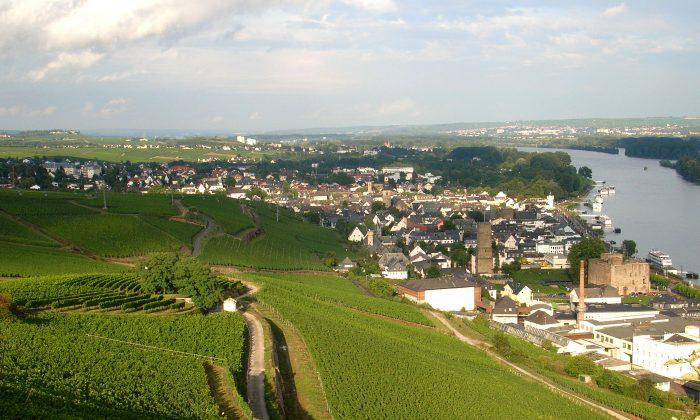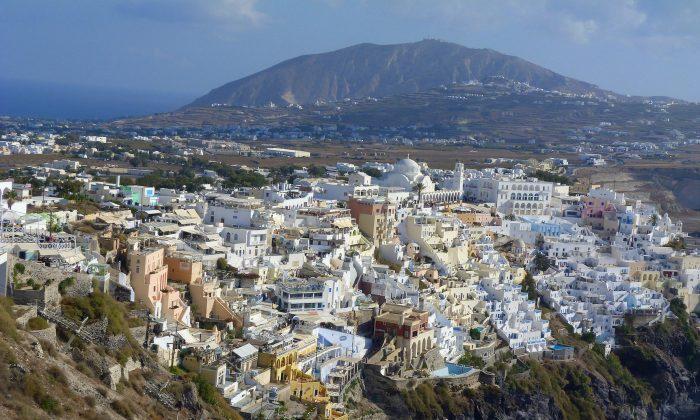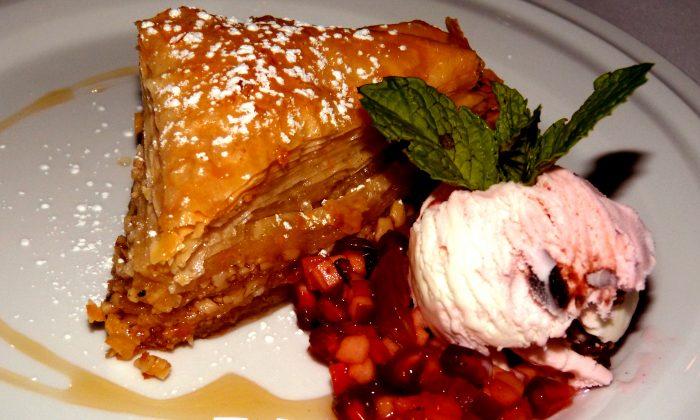For a wine aficionado, there is nothing more exciting than a visit to a wine-producing area seeing and tasting, firsthand, how high quality wines are created.
Since Roman times, the Mosel-Saar-Ruwer has been one of the most important German wine regions. There are a little less than 10,000 hectares under grapevine, of which 56 percent are riesling and the balance mostly Müller-Thurgau, with a very small amount of acreage devoted to Elbling and Kerner grapes.
The region stretches from the Luxembourg border to Koblenz, where the Mosel River flows into the Rhine. It is subdivided into four bereiche (sub regions) of which Bernkastle has the best vineyards planted, often precariously, with riesling vines on the steep slopes of slaty hills along the banks of the Mosel River.
Found here are a number of the world’s most famous vineyards, the Berncasteler Doctor, the Berncasteler Badstube, and the Wehlener Sonnenuhr and Zeltinger Sonnenuhr. This is the riesling wine region par excellence.
Wines from Berncasteler Doctor are on every important wine list, both in Germany and abroad. The name “Doctor,” as legend would have it, originated in the 14th century when the ailing elector of Trier, Archbishop Bohemund II, revived miraculously after drinking a glass of wine from the vineyard.
During most of the 19th century, the Doctor was leased to one family and it eventually became the property of Dr. Hugo Thanisch and his wife Katharina, whose descendants still own a large tract of the land. In 1900, the mayor of Bernkastle sold his personal parcel of the Doctor to the Deinhard Company for 100 gold marks per vine—equal to 100 gold marks per square meter, as at the time they planted only one vine per square meter—the largest amount ever paid for a vineyard in Germany.
The Doctor is still the highest priced piece of real estate in the world of premium vineyards.
The soil of the vineyard is decomposed slate and/or kaolin-slate. Because of the steepness of the terrain, work is carried out by hand. The vineyard is planted exclusively with riesling vines, about 45 percent of which are ungrafted, on their own rootstocks. Many of the mature, ungrafted vines belong to the Wwe. Dr. H. Thanisch–Erben Thanisch winery, now run by Sophia Thanisch-Spier, the great-granddaughter of Hugo and Katharina.
This branch of the Thanisch family owns half of the Thanisch Doctor parcel. Wwe. Dr. H. Thanisch–Erben Müller-Burggraef, owns the other half and it is managed by Barbara Rundquist-Müller. In 1988, the property was divided in two equal parts after a disagreement amongst family members on how the business should be managed.
At the Doctor, the harvest usually starts toward the end of October, and continues to the end of December, or even early January depending on the grape ripeness required to achieve a particular Prädikate (attribute) that is sweetness at harvest, as indicated on the label—late December or January is when winter-frozen grapes for ice-wine are harvested.
Pickers make several passes through the vineyard, as the grapes ripen. The grapes are hand-selected at the site, and then transferred to the estate for pressing and vinification. The grapes are crushed immediately on arrival at the estates, in order to retain the freshness and aroma so characteristic of Mosel’s rieslings. Three major estates with holdings at the Doctor have magnificent cellars hewn out of the rock under the vineyard.
The wines produced at the Doctor are award-winning, and most are sold at an annual auction. These noble wines are elegant, with tropical fruit, lemon, and ripe peach and/or plums on the palate, medium minerality, and a long honeyed finish.
Two other major vineyards in the area are the Wehlener Sonnenuhr and Zeltinger Sonnenuhr, located on a great natural amphitheater of vineyards formed by a bend on the River Mosel.
The vineyards are divided into parcels that are owned by a number of wineries, most belonging to descendants of Herhardus Hermann Prüm (1169–1229), the original owner. The fragmentation is due to the fact that Sebastian Alois Prüm divided the original vineyards among his seven children. Like the Doctor, both Sonnenuhr vineyards are located on a very steep slope. In this vineyard, late harvesting is the rule, to achieve the best and ripest fruit possible. The name Sonnenuhr—sundial—comes from the very large sundials erected on the Wehlen and Zeltinger sites by Jodocus Prüm in 1842, so that the vineyard workers would know the time of the day.
In the great years, the Sonnenuhr wines have an opulence prized by wine drinkers worldwide.
Weingut S. A. Prüm’s owner and winemaker Raimund Prüm welcomed us at his estate in Wehlen, on the banks of the Mosel, where ancient cellars contain a treasure of wonderful wines. His dry wines are very pale straw in color, aromatic, delicate, with a remarkable citrus and green apple expression. The noble (sweet) wines are exceptionally good with yellow tropical fruit, stewed prunes, and a sour-orange base on the nose, apricots, honey, and nectarines on the palate. The Trockenbeerenauslese (TBA) had a consistency almost like a very liquid honey. They all had a very long, slightly spicy, intriguing finish.
Another excellent winery is Weingut Selbach-Oster located in the town of Zeltinger. With holdings in Bernkasteler Badstube, Wehlener Sonnenuhr, Zeltinger Sonnenuhr and Zeltinger Himmelreich (another very good vineyard), Selbach-Oster creates elegant, crisp, low-alcohol, full-flavored wines.
All the wines I tasted were very aromatic with a juicy minerality that reflected gray-blue and blue slate soil, where ungrafted vines grow. Among the most interesting was a sample of the Zeltinger Himmelreich riesling Kabinett halbtrocken that is demi-sec.
Many visitors rent bicycles to travel around. There are excellent bicycle paths along the Mosel and between towns, though getting to the best vineyards might be a problem with that mode of transportation, as the vineyards are situated on extremely steep hill slopes.
À votre santé.
Manos Angelakis is a well-known wine and food critic based in the New York City area. He has been certified as a Tuscan Wine Master, by the Tuscan Wine Masters Academy, as well as being an expert on Greek, Chilean, and Brazilian wines. He judges numerous wine competitions each year and is the senior food and wine writer for LuxuryWeb Magazine and The Oenophile Blog.
Germany’s Liquid Gold
For a wine aficionado, there is nothing more exciting than a visit to a wine-producing area seeing and tasting, firsthand, how high quality wines are created.

4/28/2014
Updated: 4/25/2014




Friends Read Free